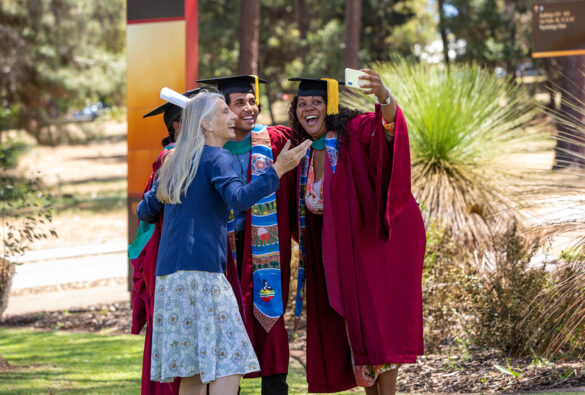Author: tsmadmin

02.08.2022
Report: Overwhelming Majority of Private Loan Customers Making Regular Payments Again, Defaults at Record Lows
The private student loan market has stabilized and returned to pre-pandemic norms, according to a new report from MeasureOne, a consumer analytics company.
The study found that the overwhelming majority of students and families are once again making regular payments, despite the continued economic impacts of the pandemic. More than 98% of private student loans are successfully repaid. The report also concluded fewer students and families are relying on customer relief programs, which became popular options early in the pandemic.
As of June 2021, private student loans — which are fully underwritten to assess creditworthiness and ability to repay — make up 7.61% of the $1.7 trillion student loan market. The remaining 92%, or $1.59 trillion in student loans, are federal student loans made by the federal government.
As the leader in private student lending, Sallie Mae recommends families follow a three-step approach to financing their education:
- Start with money you won’t have to pay back. Supplement your college savings and income by maximizing scholarships, grants, and work-study.
- Explore federal student loans. We encourage students to explore federal student loan options by completing the FAFSA.
- Consider a responsible private student loan. Fill the gap between your available resources and the cost of college. We encourage students to evaluate all anticipated monthly loan payments, as well as how much the student expects to earn in the future, before considering a private student loan.
Sallie Mae is committed to helping students achieve their higher education goals. Through a free suite of tools and resources, including planning calculators, college comparison tools, scholarship searches, and FAFSA support, we help students and families maximize their options before borrowing. By providing the necessary resources to help students and families confidently navigate their higher education journey, Sallie Mae can set them up for a lifetime of success.
Read the full report here.

10.04.2021
How Sallie Mae is Helping Expand Higher Education Opportunities
Higher education is a proven pathway to opportunity and economic mobility, but each student’s journey is unique. Up until recently, a traditional path through a two-or four-year degree program has largely been presented as the ideal option for students. The reality is, however, that path may not be right for everyone. In fact, today, roughly 70% of students are considered non-traditional students, according to a 2015 report from the Department of Education. Put simply, college can no longer be viewed as a one-size-fits-all experience.
Evolving outlook on “college”
Trade schools and community colleges are a crucial part of the higher education universe. Providing hyper-focused curriculum over a shorter time, these schools can result in highly skilled professionals with a clear path. From culinary arts to coding, the expansion of career training is helping students who may not want a traditional path earn a degree that will increase their employability through hands-on training. Often, though, these programs have limited resources, and scholarship opportunities remain limited. As a result, students at these schools are left with fewer financing options — a significant barrier for many to attend.
Supporting students on different paths
Sallie Mae is working to make options accessible and ensure more students can pursue and achieve their unique goals. That said, Sallie Mae understands the importance of quality when it comes to career programs. That’s why Sallie Mae administers a rigorous review process to ensure programs will set students up for success upon completion.
For example, Sallie Mae’s partnership with United Airlines Flight Academy is helping change the face of the aviation industry by increasing the number of women and people of color in the training program. The academy aims to train at least 5,000 new pilots by 2030, half of which will be women and people of color. Sallie Mae offers responsible private student loans to help highly qualified students who wouldn’t otherwise be able to access the opportunity.
Student loans aren’t the only piece of the puzzle. Although more limited, there are scholarships out there for students pursuing a professional certificate or training program. For example, The Sallie Mae Fund offers gap scholarships, including to students interested in certificate and training programs in 2021.
It’s time that higher education better meets the needs of today’s students. Sallie Mae is committed to doing our part, providing tailored support and responsible financing to further expand opportunities in higher education that will yield a future students can feel confident about tomorrow.

07.29.2021
Families Continue to Value Higher Ed, but Miss Out on FAFSA, Scholarships
Students and families across the country continue to believe in the value of higher education, according to Sallie Mae® and Ipsos’ “How America Pays for College 2021” research report. Nine in ten believe college is an investment in the future, 89% believe a degree will create opportunities, and 81% believe graduates will earn more as a result of their degree.
Given the consensus surrounding the value of higher ed, it makes sense that families are prioritizing their plans for how to pay. More than half of families (58%) report having a plan to pay for all years of college, up from 44% just two years ago. Understanding how families are planning and paying for college helps Sallie Mae uncover more ways to bridge gaps in higher education financing, as well as point students and families to existing resources that could help them.
Here are three things we know about how students and families value, plan, and pay for college today — and how Sallie Mae is helping students make sense of it all.
While more families have a plan to pay, fewer are completing the FAFSA®
The number of families filling out the FAFSA® continues to decline, which means more families are missing out on important federal financial aid opportunities. Just 68% of families filled out the FAFSA in the 2020-2021 academic year, the lowest level in the 14-year history of “How America Pays for College.”
Some of the most-cited reasons for not completing the FAFSA® include concerns about it feeling too complicated and the time required to complete it.
More than half of families using scholarships – but majority of those who don’t have never applied
Scholarships are an effective way to lower the total cost of college — they covered 16% of all education costs last year — but many families are not taking advantage of these opportunities for free money. According to the report, 44% of families didn’t use scholarships to help pay for college. Of those who didn’t use scholarships, 74% didn’t apply. Many families say they don’t know what scholarships are available, and students said they didn’t have time to apply and didn’t think they’d be eligible to win.
There is no shortage of scholarship opportunities out there, but finding the right ones can be tricky. Sallie Mae’s free scholarship search tool matches students with scholarships based on their skills, activities and interests.
More families (56%) are making payments on student loans while in school.
The number of families making payments on loans while the student is in school is on the rise, up from 46% last year and 41% the year before. Making loan payments during school helps families save money long-term and lower the total cost of the loan.
To that end, Sallie Mae offers the choice between three in-school repayment plans — deferred payments, fixed monthly payments, and interest-only payments. While everyone’s financial situation is different, these options allow students and their families to make informed decisions about the best path for them.
Preparation is the key to both financial planning and academic success, which is why Sallie Mae is committed to providing students and families with the information and tools needed to be successful on both fronts.
FAFSA is a registered service mark of U.S. Department of Education, Federal Student Aid

07.29.2021
Report: Vast Majority of Students and Families Effectively Managing Private Student Loans
The latest Private Student Loan Report from MeasureOne provides a helpful glimpse into the private student loan industry — and some of the findings may surprise you.
Contrary to student debt-related headlines, students and families continue to effectively manage private student loan payments today. In fact, the overwhelming majority are back to making regular payments despite the pandemic, and fewer than 1% of loans are defaulting annually.
Private student lenders have an approach anchored on strong underwriting, assessing a borrowers’ ability to afford a loan. High rates of cosigner participation also help keep delinquency and default rates low. This year was no different, with these rates at their lowest since 2015 — accounting for less than 1% of all private student loans across the industry.
Private student loans make up approximately 8% of outstanding student loans. The remaining 92% — roughly $1.59 trillion — are federal loans that are owned or guaranteed by the Department of Education. Recent stories have shed more light on some of the issues around federal student loan repayment.
Sallie Mae is committed to helping students achieve their higher education goals — and the last year-and-a-half was no exception. By empowering students with the knowledge, tools, and resources to make smart financial decisions, Sallie Mae can set them up for a lifetime of success and confidence.
Click here to view the full MeasureOne Private Student Loan Report.

07.09.2021
How Sallie Mae Is Helping Make College More Affordable and Accessible for All
The benefit and value of a higher education has never been greater, but the reality is not all students have the same opportunities. About 78% of high school students from the highest economic class enrolled in college, compared to 28% of their low-income peers. And minority students finish their degree programs at significantly lower rates than white students.
Sallie Mae® believes all students who desire to achieve a higher education deserve the support they need to make it happen. Higher education is a great equalizer, but only when students from all backgrounds have the opportunity to access and complete it.
Advancing diversity in higher education
Sallie Mae launched a variety of initiatives to help drive equity in higher education, including a partnership with Thurgood Marshall College Fund to provide minority students scholarships to not only access and begin their education journey, but also complete it. Over the course of the next three years, $3 million in scholarships will be awarded to students through The Sallie Mae Fund’s Bridging the Dream Scholarship Program:
Specifically in 2021:
- The Bridging the Dream Scholarship for High School Seniors will provide $250,000 in scholarships to help make the dream of higher education a reality for minority students who are finishing high school.
- The Completing the Dream Scholarship will award $650,000 in scholarships to minority students and those from underserved communities who are on track to graduate but are at-risk of not completing due to financial emergencies or unpaid school bills.
- The Bridging the Dream Scholarship for Graduate Students will provide $100,000 in scholarships to students from minority and disadvantaged communities who are looking to use their degrees to advance social justice.
Addressing unmet needs
In addition to scholarships, Sallie Mae is distributing $1.5 million — $500,000 a year — to nonprofit partners who remove obstacles to higher education for minorities and underserved communities.
In 2020, Sallie Mae supported:
- The Point Foundation, which helps LGBTQ students access and complete college, and offers services that counter bullying, promote confidence, and build experience through internship programs.
- Colin Kaepernick Camp, which promotes leadership and empowerment for social change in Black and brown communities.
- National Urban League, which is working to understand how the digital divide is a barrier to Black and brown students’ ability to access and complete college.
- Hispanic Association of Colleges and Universities, which supports campuses with high Hispanic enrollment.
Providing tools to students and families
Sallie Mae aims to help students and families access, afford, and complete college, and we provide free online tools to make that possible including Scholly, a one-stop shop to search and apply for millions of dollars of scholarships.
Much more work is needed to close achievement gaps and increase access to, and completion of, higher education. College should be affordable and accessible for all students, and Sallie Mae is dedicated to finding and implementing solutions.
FAFSA is a registered service mark of U.S. Department of Education, Federal Student Aid

06.08.2021
How Sallie Mae Prepares Students to Pay Back Their Loans
After years of studying and working hard, millions of college graduates across the nation are transitioning from college to the next chapter of their lives. This could mean new jobs, new cities, or new goals — a cause for celebration, especially considering the obstacles students faced this past year.
Even after students finish up college, the learning doesn’t stop. Next on the syllabus is setting and maintaining a healthy budget, and for those who borrowed to pay for college (34% of students borrowed last year, according to “How America Pays for College”), that budget will soon include paying back student loans.
To ensure students get started on the right track, Sallie Mae® works to remove the element of surprise from loan payments by beginning clear communication with students and cosigners while they’re in school and throughout the life of their loans.
Staying up to date on student loan status
Students have very busy schedules, which is why Sallie Mae makes it as easy as possible for them to stay up to date on the status of their loans. Students can create an online account or download the Sallie Mae mobile app to get notifications of their upcoming payments due. They can even enroll in auto-debit to ensure their payments are always on time, which can also save them money by lowering their interest rate.
Sallie Mae also sends students and their cosigners a loan summary each year they are in school, including interest accrued. This is especially important for Sallie Mae customers who choose to defer payments on their loan during college, as it helps them keep track of what they’ve borrowed and what they owe. That said, roughly half of Sallie Mae customers choose to make a fixed payment or pay interest on their loans while in school, which can significantly lower the total cost of the loan.
Tools and tips for the six-month separation period
Sallie Mae private student loans come with a six-month separation or grace period for undergraduate programs that begins once a student leaves school, giving them time to find a job and get settled into post-college life. Sallie Mae lets students know at the start of their grace period what their estimated payment amount will be and provides tips on when, where, and how to pay on time.
Sallie Mae also offers tools to help students prepare for repayment, such as a monthly budget worksheet, which helps students create a budget to meet their financial goals. The company also partners with Handshake, a job search tool, to provide students with greater access to career opportunities.
At the end of the day, preparation is key to responsible financial planning. From the moment students take out a loan through the months post-graduation, Sallie Mae helps ensure the next generation of future leaders can not only meet their loan payments, but make strides toward their financial goals.

05.19.2021
Addressing Racial Gaps in College Graduation Rates
Increasing financial support for students of color is an important first step.
Students of color are not graduating from college at the same rates as white students, and they are more likely to experience financial hardships that make it difficult to complete their degrees. In an op-ed published in The Hill, Sallie Mae® CEO, Jon Witter, and Thurgood Marshall College Fund President and CEO, Dr. Harry L. Williams, address the growing racial gap in college graduation rates and how Congress can begin to fix it.
Addressing disparities in educational attainment will require Congress to enact a number of reforms, and a good place to start is increasing financial support for Black, Hispanic, and Latino students at risk of delaying their degrees or dropping out. To that end, Sallie Mae and Thurgood Marshall College Fund launched the Completing the Dream Scholarship to support thousands of students at risk of not returning to school or graduating due to a financial situation.
“This is our nation’s moment to get this right and to invest in graduates, not just in attendance,” Witter and Williams said.
Click here to read the full op-ed in The Hill.

05.05.2021
Increasing Access and Opportunity Through Higher Education
2020 presented many challenges to everyone — from battling the COVID-19 pandemic to addressing deep racial inequities that exist in our nation.
As part of its core operations, Sallie Mae® worked to alleviate the economic pressure caused by the pandemic and is making contributions toward the shared goal of closing the racial achievement gap. Sallie Mae’s commitment to powering confidence is not just good for business. It’s good for everyone.
Here’s how Sallie Mae helped increase access and opportunity through higher education in 2020:
Powering Community
The Sallie Mae Fund committed $4.5 million in scholarships and grants to promote diversity in higher education and advance social justice. This included a $3 million scholarship program with Thurgood Marshall College Fund to provide scholarships help minority students access higher education and complete their post-secondary programs.
In addition to scholarship support, Sallie Mae put $2.2 million toward charitable contributions in 2020. The Sallie Mae Fund contributed $1 million to local food banks where team members live, work, and serve. This contribution resulted in 2 million pounds of food, 900,000 meals, and personal protective equipment for food bank staff and volunteers.
Sallie Mae employees play a critical part in our efforts to power local communities. As protests and demonstrations led many local businesses in Delaware to board up their storefronts, Sallie Mae team member Jannah Williams partnered with local artists to turn boarded up storefronts into inspirational canvases. Her mural addressed our nation’s history of racial injustice and combined a collection of newspaper articles covering racism over the last two hundred years with images of civil rights leaders and the simple message: “We just want a kinder world than this.”
Powering Customers
As a leader in private student lending, we work hard to help students and families more easily access and complete higher education, and we provide a number of free tools to help them achieve that. In the 2019-2020 academic year, more than 24,000 students reported receiving at least one scholarship via our free scholarship search tool, covering $67 million in college costs. In light of the COVID-19 pandemic, Sallie Mae also offered tailored relief programs to give customers the ability to pause student loan payments.
We also recommend students and families use our 1-2-3 approach to paying for college — first scholarships and grants, then federal student loans, and finally private student loans to fill the remaining gap. And year after year, our fair and responsible approach to lending works. On average approximately 2% of our loans in repayment default annually.
Powering Team Members
Sallie Mae’s mission-driven approach extends beyond the students we support — it applies to our team members, as well. We strive to maintain a diverse and inclusive workplace, which is made possible by team members who actively listen and learn from another. To that end, we launched Diversity and Inclusion listening tours in 2020 to provide team members with a safe space to explore discussions about race, gender, identity, religion, age and background. Hundreds participated in these virtual discussions, which sparked conversations with leadership and team members for the remainder of the year.
Powering the Environment
Higher education is not our only priority at Sallie Mae — managing our environmental impact is also top of mind. From upgrading our facilities to reducing energy usage, to reducing our carbon footprint by migrating to cloud servers, we were able to reduce our energy expense in the office by 10%. We also reduced our paper usage and waste by 60% last year.
We’re helping our customers go green, too, with our transition to electronic statements. By the end of 2020, 88% of our customers opted out of paper statements and into the greener option of electronic statements.

04.15.2021
Factoring Finance into College Planning
The ‘college talk’ should include how to pay for it
College acceptance letters have been delivered to millions of students across the nation. As students weigh their options, they’ll consider campus life and academic quality, but one critical factor in choosing the right college is often rushed at this most consequential moment: how to pay for it.
Even though paying for college represents one of the first significant financial commitments a young person will make, many don’t have comprehensive discussions about how to manage that cost. According to a 2020 survey conducted by Ipsos and Sallie Mae®, 90% of families have discussions about college, but only two-thirds of families actually discuss the financial logistics.
The survey also found that those who plan ahead for college are three times more likely to feel confident about how they will afford it. This is one of the many reasons why Sallie Mae encourages students to discuss their options early and provides free tools to help students and their families navigate the college decision — and financing — process.
Ask questions about the financing process
The college process is constantly changing, and family members and other trusted adults who are looking at financing options with a student might be surprised. What they may recall from their own experiences — whether a few years ago or a few decades ago — has likely changed. An early start will give everyone the time and space to weigh all options.
The best way to begin is by asking questions — and getting answers — about your specific needs. Having a plan will allow you to compare financial aid offers and factor scholarships and grants into your financing formula. Just as important is considering the additional costs beyond tuition. Room and board, books, computers, and transportation can add up very quickly.
Sallie Mae suggests a three-step approach to help with college financing planning:
- Begin with money students won’t have to pay back, such as scholarships, grants, and work-study. These can become critical tools to help students and families make college more affordable because they help reduce the total price tag. Even so, it can be difficult to understand where to find them and how they fit into a student’s greater college financial plan.
Sallie Mae offers a number of free tools to help students access and understand their options, including a scholarship search tool, and you don’t have to be a Sallie Mae loan customer to access them. Families should also utilize planning calculators to get a sense of the bigger paying-for-college picture. Sallie Mae’s planning calculator allows students to enter savings, scholarships, grants and loans and see the full cost of attending a school. - Explore federal student loan options, which account for about 90% of today’s outstanding college loans. That starts with completing the Free Application for Federal Student Aid (FAFSA®). Unfortunately, too many families skip the FAFSA because they think it’s too complicated or that they won’t qualify for financial aid. This oversight means potentially missing out on thousands of dollars in financial aid.
- Turn to a private student loan to fill the gap. After maximizing scholarships, grants and other federal financial aid, Sallie Mae helps students fill any financing gap by offering private student loans. Often secured with a cosigner, private student loans go through underwriting to ensure customers will be able to manage them successfully. Students and their families are encouraged to evaluate all anticipated monthly loan payments, and how much the student expects to earn in the future, before considering a private student loan.
By having the talk about how to pay for college now, students will be better prepared to make informed decisions that will serve them today and for years to come. They will enter their college years with more confidence that the financial obligations they are assuming are prudent and manageable.
It’s why Sallie Mae is working to bridge the knowledge gap in financial literacy — so students can make thoughtful decisions now that will set them up for the life they want.
FAFSA is a registered service mark of U.S. Department of Education, Federal Student Aid

03.11.2021
Higher Education Financing is Complicated. Here’s How Sallie Mae is Helping Students Make Sense of it All.
Millions of students enroll in college, vocational school, or certificate programs each year, eager to learn. Before enrolling, they face a lot of decisions, including where to attend, and how to pay for it.
Wading through the details of higher education financing choices (and forms) can be confusing, especially for first time students. Navigating the FAFSA® (Free Application for Federal Student Aid) and comparing multiple financial aid offers from schools can leave many families scratching their heads, not fully aware how the decisions they make today may affect their lives tomorrow.
We get it. And it’s why Sallie Mae® has made a commitment to help students make sense of their financing options – whether or not they end up choosing to borrow from us. By helping students understand their options, we’re not only helping them make smart, thoughtful financial decisions, but also we’re powering them with confidence to achieve their goals.
Understanding Financing Helps Students Achieve Their Dreams
Helping students unlock the power of higher education begins with making it easier for families to understand the full range of financing options available before they apply for assistance and loans.
The philosophy we use to counsel these families is fairly simple:
- Start with money you won’t have to pay back. Loans should never be the first option to pay for college. In fact, they should be the last. Students should supplement college savings and income by maximizing scholarships, grants, and work-study. After all, the best money is what you won’t have to pay back. This is why we provide a free scholarship search tool with access to hundreds of scholarships for students from all backgrounds.
- Explore federal student loans. We encourage students to explore federal student loan options by completing the FAFSA. Too many families skip the FAFSA because of the complicated process, which means they’re potentially missing out on thousands of dollars in financial aid.
- Consider a responsible private student loan. Sometimes, after accounting for savings, scholarships, and grants, and federal financial aid, there’s still a gap. That’s where a responsible private student loan can make sense. Often secured with a cosigner, these loans go through underwriting to ensure customers will be able to manage them successfully. Our lending philosophy also encourages students and their families to evaluate all anticipated monthly loan payments and how much the student expects to earn in the future before considering a private student loan.
This approach is working. On average approximately 2% of our loans in repayment default annually.
When our students are able to make informed decisions about financing their higher education plans, they are empowered and more likely to achieve financial independence after school. The correlation between graduating and future success is clear and unmistakable. People with a bachelor’s degree typically earn 66% more — $1 million more over their lifetime — than those with only a high school diploma.
Tools for Everyone
Earning a degree is critical to success in today’s workforce. It’s why our financial literacy products are available for free to anyone — whether they hold Sallie Mae loans or not. From planning calculators, to estimating monthly loan payments and future costs, we want smart planning and preparation to be part of every student’s higher education experience.
We’re proud of our financial products, and we’re proud of the students and families using them to achieve their dreams. Sallie Mae isn’t just financing private student loans — we’re helping create America’s future.
FAFSA is a registered service mark of U.S. Department of Education, Federal Student Aid


